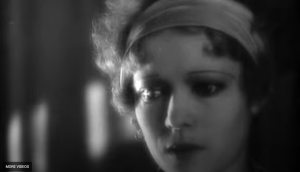Brumes d’automne (Autumn Mists), a 1928 silent film by Dimitri Kirsanoff, is a masterclass in early cinematic language. Even now, almost a century later, its experimental editing techniques remain captivating. Kirsanoff utilizes fast cuts, rhythmic montage, and close-ups to draw us into the internal world of a woman navigating a landscape of memory and emotion.
The film’s power lies in its ability to evoke a distinct mood. As the woman’s face, framed by dark eyes and porcelain skin, flickers across the screen, we are struck by a sense of unease. Her carefully sculpted eyebrows and pulled-back hair give her an unsettling, almost doll-like appearance. This, coupled with her restrained expressions, creates a feeling of something not quite human, like a porcelain doll animated by a lingering spirit.
Kirsanoff’s intention was to depict a state of mind through images of nature losing their “density and unity.” He achieves this through distorted perspectives, fragmented images, and scenes of nature in a state of flux, mirroring the woman’s inner turmoil. The fast-paced editing, innovative for its time, mirrors the fragmented nature of memory and thought. As new scenes appear, the accompanying music shifts, creating a symphony of visual and auditory cues that guide us through the woman’s emotional landscape.
However, the film’s impact may differ greatly depending on the viewer’s cultural context and experiences. While Kirsanoff’s editing was groundbreaking in 1928, modern audiences accustomed to rapid cuts and visual effects might find the film’s pace slow and its imagery dated. Furthermore, the woman’s doll-like appearance, coupled with the film’s melancholic tone, could easily be reinterpreted through a modern horror lens. Imagine the same footage with a sinister score – suddenly, the film transforms into something quite different. 
This raises an interesting question: Does the meaning of a film remain fixed over time, or can it evolve alongside cultural perceptions and technological advancements? Brumes d’automne serves as a reminder that art can be a fluid and dynamic entity, its interpretation shaped by the lens through which it is viewed. While Kirsanoff’s intentions are evident in his masterful use of montage and evocative imagery, the film’s impact ultimately rests in the hands and minds of its audience